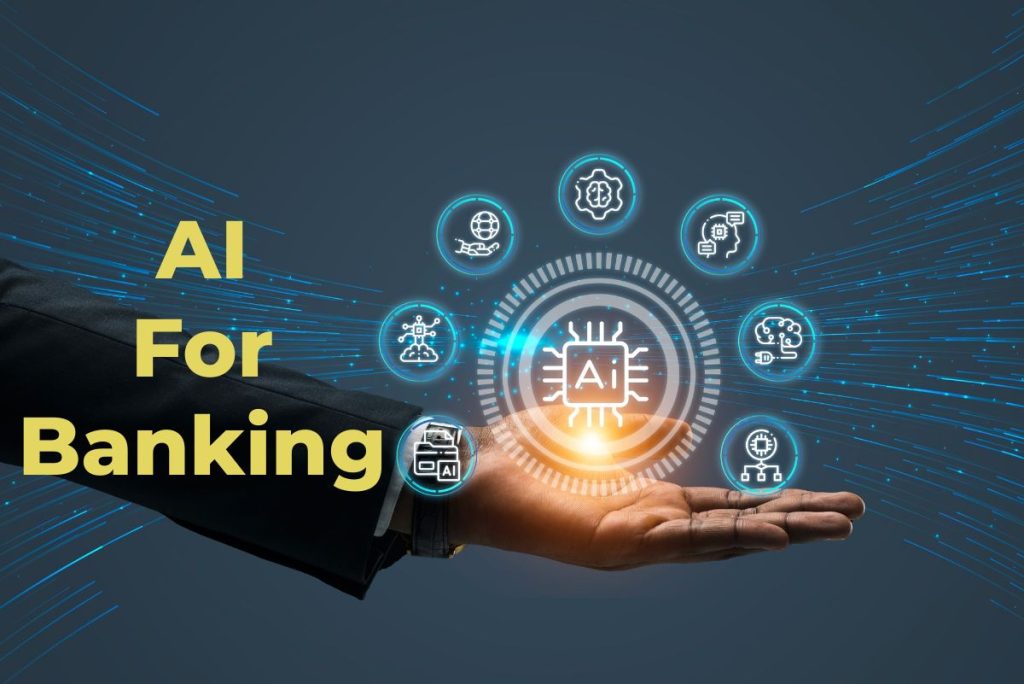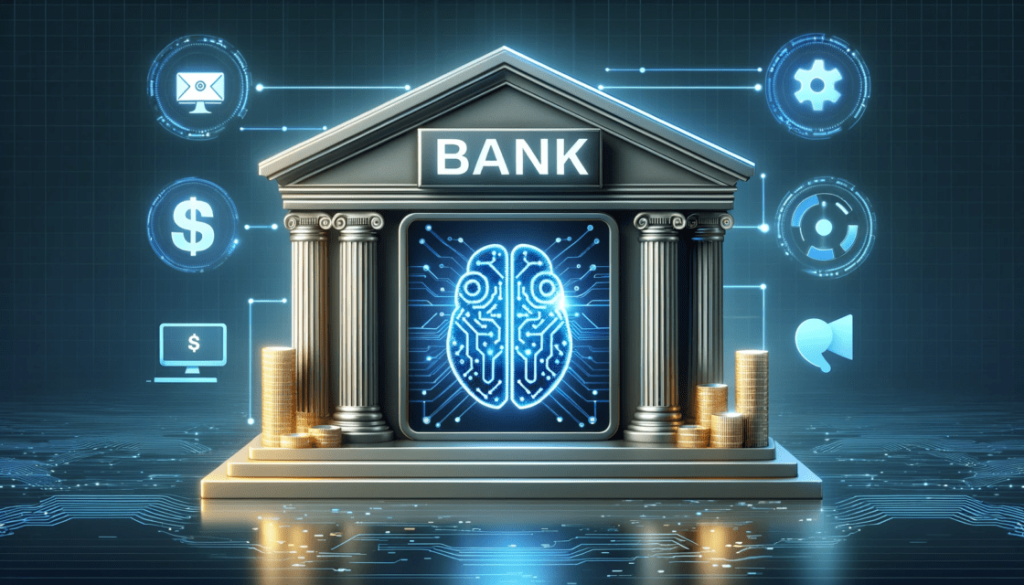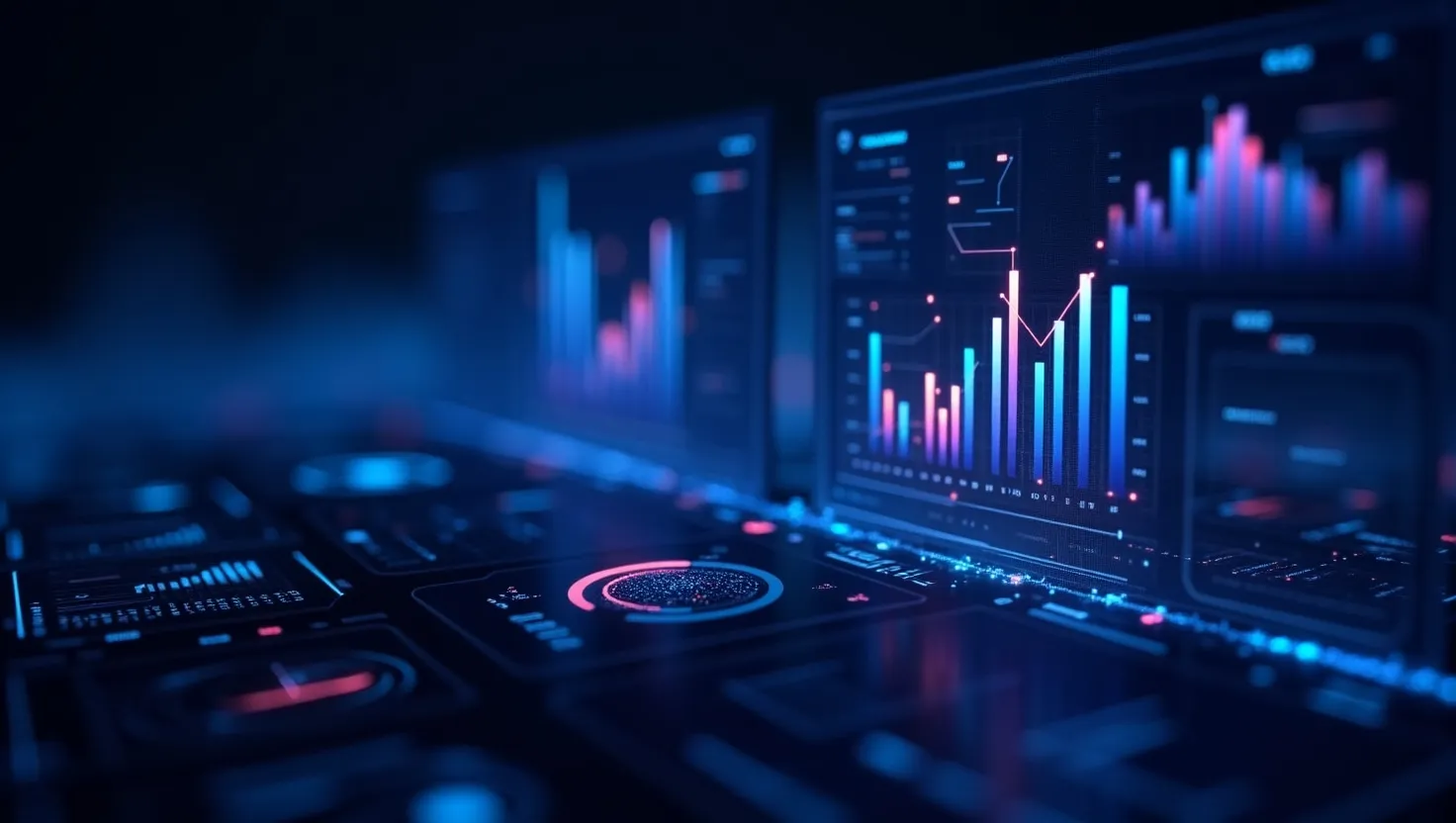
AI In banking security is an important aspect of protecting sensitive data, preventing fraud, and maintaining regulatory compliance in the rapidly changing world of digital finance. In other words, with the emergence of sophisticated cyber security threats, ai banking security has become a strategic advantage. From advanced fraud detection to flawless biometric authentication, in bank systems, AI does double time by strengthening security while enhancing the customer experience. Therefore, it is paramount for banks to understand how to leverage AI In banking security to outsmart the bad guys while staying trustworthy and operationally efficient. This article gives an insight into AI In banking security examples, showing how AI In banking security assists banks through numerous innovative applications in areas like risk management, real-time monitoring, transaction analysis, etc. Looking forward, future trends that will define AI implementation in finance and regulation processes will be considered.
Table of Contents
Introduction to AI in Banking Security
The repositories of banks tend to hold much larger amounts of personal and financial data, thus making them the preferred target of cybercriminals. It has a great impact on consumer confidence, the regulatory position, and stability in the market itself. Traditional security measures, however much one insists, cannot really catch up with the modes of attacks which keep on changing and evolving with time. And this is where the AI in banking security shows the transformation.
Artificial Intelligence opens a proactive and intelligent layer that identifies and analyzes risk and mitigates it much faster than traditional methods. It is how to use AI In banking security-the appropriate strategic imperative that seems to be espousing the adoption of machine learning algorithms, biometric applications, and data analytics in real-time to reinforce defenses by banks. Thus, within reach of threat detection systems is far beyond those boundaries, including the aspects of predictive analytics, automated response systems, and compliance efforts to some of the most grueling regulations without having to sweat over.
This section reveals the picture of how AI technologies in banking security become the kernel of contemporary risk mitigation strategies: it shows improvement of capability to address emerging threats, prediction of fraud before it happens, and guarantees of compliance operation-all of which are basic needs in a secure banking environment.
The Importance of Security in Banking
These are veneer protective measures that run deep into many facets of banking security, saving not only assets but also customer information and transaction integrity. Known Hijackers from malware, phishing schemes, and insider threats have expanded over time as they advance exceptionally in hacking techniques. Security seems to be the lifeblood of non-involvement to ground rupture and devastation arising from financial loss and legal action, with unmanaged damage to clean robes of death.
The ability to detect quickly and accurately any anomalies is critical. The establishment of systems in banks, however, has become very difficult as banks would have to develop systems capable of differentiating legitimate transactions from other malicious activities. Also, the customers should trust that personal identities and financial data are protected from breaches through transparent and reliable security measures.
More so, compliance with the increasing number of legislation such as GDPR, PSD2, and different privacy frameworks is part of overall security. Non-compliance would incur heavy fines and sanctions, further stressing the need for well-integrated with AI In banking security compliance tools that monitor, audit, and report in real-time. The stakes are high, and traditional methods do not work anymore; hence it is high time for AI to replace the norm in this business of banking security.
The Role of AI in Enhancing Security Measures
AI changes the game in security because it enables systems to learn and know how to recognize patterns, as well as make decisions on their own-increasing significantly reductions of their response times and eliminating human errors. For that reason, rather than a static security rule, AI models will dynamically change themselves to comply with newly-built threats. This dynamic capability comes especially handy when originating detection of entirely new forms of cyber attacks or forms of fraudulent behavior.
Machine learning works with huge amounts of data—transaction logs analysis, customer profiles, or network activity—to identify behavior that is possibly suspicious and cannot be easily classified by human or rule-based systems. This gives banks the ability to block or flag potentially harmful transactions before they occur, thereby decreasing their financial losses.
Moreover, AI aids in risk management through predictive visibility to vulnerabilities and fraud trends. It further ensures that institutions use resources in a more efficient manner, focusing on the high-risk areas and implementing prevention measures proactively. Thus is created a hybrid security ecosystem: AI-driven; automation-focused; coupled with human supervision-for the more complex requirements of modern banking.
Overview of AI Technologies Used in Banking Security
Artificial Intelligence has developed different core technologies for several areas of modern banking security programs.
Machine Learning: Trains historical data models to do predictive analysis and anomaly detection.
Provides biometric authentication: Facial recognition, fingerprint scanning, voice recognition, and other biometrics for access.
Natural Language Processing (NLP): Die-hard emails, snarky chat messages, etc.exceptions that reveal the information about the threats.
Such as Data Encryption & Privacy-Preserving : Confidential data kept secure during transport and at rest.
Threat Intelligence Platforms: Collect and analyze global threat data with the aim to forecast and mitigate cyber threats.
All these technologies work together in establishing layered security architecture. For example, on combining machine learning with biometric authentication, behavioral and physical identities verification could be achieved, thus reducing risk of impersonation. With AI In banking security development being on the fast pace, the urgency is increasing to incorporate such tools into the existing cybersecurity infrastructures for resilience in banking environments.
Applications of AI in Banking Security
The multifaceted AI In banking security finds extensive applications in banking security in tandem with intelligent modern solutions for faster, more precise processing than existing techniques. These applications include, but are not limited to, fraud detection, risk management, biometric identity authentication, transaction monitoring, and advanced data analysis. Banks can proactively shield themselves against new threats through adoption of these tools.
Fraud Detection and Prevention
Fraud is still one of the most important issues in banking. Criminals employ very clever techniques, such as synthetic identities, account takeover, and social engineering scams. The primary way AI In banking security assists in fraud detection is by analyzing transaction patterns and flagging potential threats for irregularities.
AI-based systems for fraud detection utilize machine learning techniques to determine individual customer and account behaviour patterns. An alert is raised whenever a transaction deviates from that established baseline—for instance, an unusual location, amount, or device. Over time, these systems will learn from new fraud tactics and adapt their detection algorithms accordingly.
Combining AI applications with manual review processes for fast decision making is the only way to successful fraud prevention. They also allow for automated actions, such as blocking of flagged transactions, or requiring more evidence of identity, thereby limiting false positives and improving customer satisfaction.
Risk Management Techniques Using AI
Risk management within a bank, among other things, is to discover weaknesses; evaluate the possible effects of such weaknesses; and, devise a plan, if possible, for preventing and mitigating those effects. Classic risk management procedures are often static modelling. Models remain static because they do not consider the pace at which things in finance change.AI In banking security changes this model into providing predictive analytics using current trends to forecast risk in what will happen in the future.
AI-based risk management includes training machine learning models created from historical data to predict defaults, credit risks, liquidity gaps, and vulnerabilities in business operations. Based on these insights, banks can align their lending policies, reserve levels, and contingency plans. In addition, AI algorithms scan for global economic indicators, social media signals, and geopolitical events to assess external risks.
Stress testing is another very important activity in risk management, whereby banks are able to simulate adverse scenarios to assess how resilient they are to them. AI allows for detailed stress test regimes, considering a number of variables simultaneously. This improves preparedness and better supports decision makers in keeping cash flows stable.
Biometric Authentication Solutions
Biometric authentication has metamorphosed customer identity verification. In the case of Banking, biometric methods like fingerprint scan, facial recognition, iris scan, and voice recognition offer customers a highly secure and friendly way of doing banking as opposed to traditional passwords and PINs.
AI increases biometric authentication with accuracy and speed. Deep-learning models discern biometric data between genuine users and imposters with a great level of precision, even under extreme conditions such as low light or partial fingerprints. Meanwhile, liveness detection mechanisms thwart any attempts to spoof these biometric systems by means of photographs or masks.
The deployment of biometric solutions stymies fraud while ensuring a rapid customer onboarding and access process. The ability to cut operational costs related to password resets and manual verifications comes to banks’ rescue. The evolution of biometric technologies would be in-sync with the efforts of AI In banking security in improving robustness against counterfeiting while keeping perfect user experience.
Real-Time Monitoring of Transactions
Real-time transaction monitoring is crucial for making timely detections of suspicious activities as well as loss prevention. An AI In banking security system analyzes live transactional data from another source and matches that data with established behavioral profiling and known fraud pattern.
Such machine learning models can process continuous data streams and identify instantly such anomalies as a huge transfer in the late-night hours or a completely new change in spending habits. With equipment for immediate detection, the intervention is possible-it can block the transaction, call for further authentication, or flag accounts for review.
Dynamic risk scoring will also be possible via real-time monitoring whereby every transaction will be assigned a level of risk based on different factors. For this reason, prioritization will be possible, hence the focus should be on the highest risk transactions as soon as possible. With all these innovations of financial transactions-e-wallets, person-to-person payments-and everything else the enabling AI In banking security capacity of instantaneous analysis becomes precious.
Advanced Transaction Analysis Using AI
Advanced AI acts not just on the basic fraud detection level to deep transaction analysis in order to reveal hidden patterns, correlations, and vulnerabilities. Advanced analytics become useful to detect new threats, track money laundering schemes, and fine-tune fraud prevention efforts.
The last step in which the transaction networks are analyzed by AI In banking security models is the tracing of funds across accounts, geographies, and products. They can then highlight suspicious clusters which are considered indicative of collusion or other kinds of illicit activities. Communication data can also undergo sentiment analysis to potentially flag insider threats or fraud rings.
This very deep kind of analysis gives banks the actionable intelligence upon which to base their strategy and improves the overall security posture. In due course, sophisticated AI In banking security algorithms will leverage the findings into an even more nuanced interpretation of transactional behaviors and push further the envelope of banking security.

How AI Helps Banks Maintain Security
In terms of predictive analytical models and compliance enforcement leverages, I would say this security architecture domain is one of the most uniquely benefi-ted areas in banking with respect to artificial intelligence integration. Ramp-up on the threat may, therefore, be a matter of surveillance by which the bank can react instantly. Hence, the trust with customers and regulators is upheld.
Machine Learning for Predictive Analytics
Machine learning is at the very core of AI-driven security. The models can be trained with historic data for the banks where they can develop predictive analytics to alarm on possible threats before these emerge. Such investments are more useful for proactive mitigation of risks and not reactive detection like typical security measures in place now.
For example, the most distinct account compromise signals or early warning signs of common fraud campaigns would be picked up by these machine learning algorithms, thus allowing for preemptive actions by the banking institution. Such an ability takes on a whole new dimension in the present-day landscape where quickly changing cyber threats normally comprise zero-day exploits and also ever more inventive attack vectors.
It optimises resource allocation, namely pointing to the high-risk segments or transactions flagged for further scrutiny, in addition to increasing the overall accuracy of risk assessment. As models continue to ingest more data over time, predictions will be made increasingly more refined, creating a self-improving security cycle that will accustom itself to new challenges.
Data Encryption Technologies in Banking
It’s the basic part of encrypting information; wherein it is stored and transmitted securely. AI In banking security improves encryption methods with adaptive algorithms reacting on an evolving threat, thus ensuring the data is always protected.
Modern Encryption AI identifies new weaknesses and proposes relevant dynamic cryptography. AI can listen to network traffic potential interception points and apply instant adjustments of encryption. AI-related homomorphic encryptions allow the processing of encrypted data without decrypting but, at the same time, preserve the confidentiality when analyzed.
AI also enables key management systems in automatic key generation, rotation, and distribution, thereby minimizing human error and increasing security. AI In banking security evolves with the encryption technology to maintain the safety perimeter resulting from very advanced decryption attempts.
Identity Verification Processes Enhanced by AI
Ensuring that individuals are who they claim to be is central to secure banking. AI-powered identity verification combines biometric authentication, document validation, and behavioral analysis to establish robust identity checks.
Facial recognition systems analyze facial features in real-time, matching them against stored profiles with high accuracy. AI algorithms also verify ID documents by extracting data and checking for authenticity, detecting forged or manipulated documents
Continuous learning models adapt to new fraud techniques, maintaining high verification standards over time.
Threat Intelligence Systems Leveraging AI
To keep abreast of all possible developments in global cyber threats, banks have to update their knowledge continuously. An emerging technology platform for threat intelligence collects, analyzes, and interprets open-source and closed-source information—dark web resources, social websites, and industry reports—at the pace of real time.
These systems allow for the preparatory malware defenses by identifying new threats, zero-day vulnerability exploitations, and activity within attacker-provided infrastructure. The ability to integrate with existing security networks allows for automated alerts and response actions, decreasing the exposure of the attack surface.
In addition, threat intelligence feeds ensure the quality of incident response plans to ensure quick containment and mitigation. Since cybercriminals have started adopting AI themselves, so far, an incessant threat intelligence powered by AI In banking security is going to be very important for resilient posture.
Ensuring Regulatory Compliance Through AI
Compliance remains a major challenge, particularly in view of the complexity and rapid changes in regulations. AI In banking security works to automate compliance monitoring, audit trails, and reporting, thus simplifying the landscape.
Automated systems trace transactions, signaling potential violations of AML (anti-money laundering) or KYC (know your customer) breaches. AI-embedded policies classify natural language processing (NLP) to interpret regulation texts in an operational workflow. In addition, AI auditing can perform continuous checks while reducing manual effort and potential human error. Therefore, in conducting business within regulations, AI In banking security assists banks in erasing the fine level and minimizing reputational damage. Its rapid adaptability to new laws makes it invaluable to banking compliance today.
Successful Fraud Detection Implementations
With a plethora of information existing on a day-to-day basis, an AI-based fraud detection monitoring system mated into the banking sector was borne into service capable of analyzing millions of banking transactions daily. Deep learning models trained using historical fraud data recognized complex patterns which then serve as indicators for the existence of fraudulent activity.
Thus, the bank achieved a marked decline in false positives, enhancing customer experience while arresting increased cases of actual fraud. Automated alerts assisted in taking prompt action against the would-be potential losses running to the magnitude of millions in a span of a year. This case is a testimony to AI In banking security scaling up security efforts without flooding the human analysts.
Banks Utilizing AI for Risk Assessment
The employees of the bank with machine learning models for the better evaluation of credit risks on a regional basis. Since the analysis stretched over a wide range of customer data-from transactional history through social behavior to some degree of economic indicators- the bank was able to separate high-risk applicants from low-risk ones with greater efficiency than the past systems.
This better risk assessment enabled the bank to offer credit more personally where the growth was cushioned by risk control. The predicted capability of the AI In banking security systems brought in early warning signs or criteria for the defaults of loans, enabling the bank to take proactive action with reference to better portfolio management.
Innovative Biometric Solutions in Financial Institutions
A fintech startup worked with well-established banks to bring voice recognition technology into their operations for customer identification purposes. The system, which was powered by AI In banking security analyzed speech patterns, tone, and cadence. This would allow banks to verify identities during phone interactions within the shortest time possible.
There would be acceptance from customers for seamless verification, while fraud rates and operational costs would reduce for banks. Thus, this biometric solution serves as a sample to show how AI can transform user authentication modalities across the entire banking realm..
Real-World Applications of AI in Transaction Monitoring
An international bank uses transaction analysis platforms powered by artificial intelligence to monitor inter-country cross-border real-time payments. These platforms are designed to detect and filter out all suspicious flows, which are found in association with funds transfers applicable to money laundering and terrorist financing. They create alarms for further investigation.
The platform was adaptable and can learn with the new case data in real time, improving accuracy with each case, as well as compliance reporting and audit readiness. Such deployments make the potential of AI In banking security in bringing secure devices into complex transaction ecosystems even greater.
Future Trends in AI for Banking Security
The dawn of the new era in banking security is dynamic, with newer trends promising to change how banks protect themselves and their clients. By following the latest developments, institutions can responsibly and effectively tap into the potentials of AI.
Evolving Threat Landscapes and AI Adaptation
Increasing in complexity, cyber threats make use of AI In banking security for intercepting security systems and for the automation of attacks. In response, financial institutions have invested in adaptive AI, which has the ability either to learn from new information or to update defensive strategies continuously.
Adversarial learning will be integrated into future AI models to recognize malicious inputs intended to trick detection systems. This will give rise to an evolutionary arms race emphasizing the continuous need for research and development in methodologies pertaining to AI security.
Integration of AI with Blockchain Technology
The decentralized nature of Blockchain bestows intrinsic advantages regarding security that are accentuated by the addition of AI. AI security management of smart contracts, malicious transaction detection on Blockchain networks, and identity verification through distributed ledger technologies can work together.
This intersection allows transparent and tamper-proof recordkeeping to mitigate fraud and unauthorized access. As Blockchain expands in banking, the projects based on AI-ledger technologies are now becoming the significant backbone for the security of digital assets.
The Impact of Regulations on AI Adoption
For example, upcoming regulatory frameworks around AI use-such as transparency, explainability, and bias mitigation-will dictate how banks develop their deployment strategies. For instance, they should be able to develop interpretableAI In banking security models justifying their decisions, especially for high stakes in credit and fraud detection.
Regulations may also require patterns of standardized protocols for AI-enabled security, prompting innovative AI architecture treatment conducive to compliance. Navigating through this space will thus require effort by technologists and policymakers together to inspire responsible AI adoption.
Predictions for AI Advancements in Banking Security
From this perspective, the future lies in artificial intelligence evolving into more holistic security ecosystems that leverage IoT data, behavioral analytics, and quantum-resistant encryption. The rise of explainable AI will look into trust and accountability issues.
Autonomous security agents capable of independently detecting, responding, and adapting to threats may soon be the norm. This progress promises a resilient and intelligent infrastructure where AI will not merely be viewed as a support tool for how does AI help banks but as an active defender.
Conclusion
In a nutshell, AI for banking security is changing the landscape in which financial institutions detect, deter, and react to threats. Applications, such as fraud detection, risk assessment, biometric authentication, and transaction monitoring, are redefining the security space. Machine learning, data encryption, and threat intelligence create flexible, efficient, and regulatory-compliant security frameworks that evolve with the environment. With future technological developments, AI-aided solutions will be instrumental in protecting asset preservation, regulatory adherence, and customer trust building in the digital world. The journey towards technology advancement is another reflection of how AI is helping banks stay afloat in an ever-evolving threat landscape.
As banking security systems integrate AI, the financial sector undergoes a transformation into a safer, more responsive, and compliant environment. By applying proactive fraud detection and seamless biometric authentication along with risk management, AI gives banks the ability to foresee and counter threats. Innovation in AI security needs to be perpetually at the top since the threats are becoming more complex and regulations keep getting more stringent. The adoption of these technologies safeguards the banks’ assets while also boosting customers’ confidence and operational efficiency, thus establishing AI as the backbone of modern security infrastructures in banking.
FAQS
What are the AI applications in banking security?
– AI applications like fraud detection and anomaly detection with biometric authentication plus behavioral analysis by using these create a big boost for better banking security by prevention from unauthorized and cyber threats.
Does AI instantly detect fraudulent transactions?
– Yes, because real-time fraud detection AI systems analyze the transaction patterns going into an immediate level of suspicion.
Do AI systems actually replace human analysts in banking security?
-No, AI works closely with human resources who bring the insight with which machines cannot do all that small mundane task: leaving the major investigations to analysts.
What are AI’s improvements in identity verification at banks?–
AI performs identity verification with facial recognition combined with voice biometrics and behavioral analysis as defense against identity theft.
What security threats may AI pose in banking?
-Algorithmic bias, loss of control over AI-induced cybercrime, and excessive dependence on automation for their threat exposure would all fall in this category.
Can AI prevent phishing and ransomware?
Certainly, it does that through its analysis of user behavior and the content of emails and URLs and, ultimately, thwarts phishing attempts.


Outstanding👍